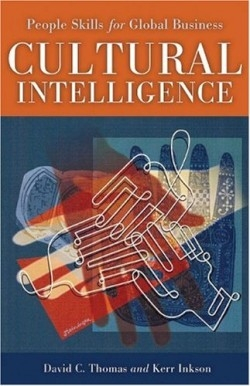
Cultural Intelligence
People Skills for Global Business
“Just as we have automatic cruise control when driving a car, we often operate on cruise control regarding culture,” say the authors. This book aims to help readers develop awareness of cultural differences in order to avoid unfortunate situations in the business environment. Unlike books that list country-specific behaviors and means of communication (like etiquette on how to greet business associates in Japan or how to deal with human resources issues in China), this volume focuses on developing a broader cultural sensitivity that is not specific to any particular geography and that can be applied to dealing with people from many countries.
Thomas, a professor of international business at Simon Fraser University in Canada, grew up in the U.S. and is a former bank vice-president. Inkson was raised in Scotland and now works as a professor of management at Massey University in New Zealand. The approach to cross-cultural management that they recommend is to acquire a basic knowledge of cultures, pay attention to cues in business situations, and develop behavioral skills.
The first three chapters discuss the fundamentals of cultural intelligence. Readers are advised to develop a basic knowledge of culture and how it influences behavior. The analogy of driving a car is used to illustrate the concept of “mindfulness,” the awareness of behavioral cues encountered in cross-cultural situations and how one must recognize and make allowances for differences, such as avoiding stereotypes. Memorable scenarios are sprinkled throughout the book to illustrate situations where a lack of cultural intelligence can negatively impact business situations. For example, what may appear to be a bribe to a man from the U.S. may be viewed as an acceptable “tip” by a man from the Middle East.
The remainder of the book shows how to develop cultural intelligence and apply its principles successfully in business situations. Chapters are devoted to leadership and operating in multicultural teams: “In a group where Ingrid expects the right to challenge, Jose expects the imposition of authority, and Ming expects a long, courteous decision process without conflict,…the manager now has to manage not only a set of culturally different individuals but a process involving different cultural responses.” A list of activities that support the development of cultural intelligence, such as multicultural team business assignments or mentors, and numerous other sources of information are provided.
Because businesses are becoming increasingly global in reach, it is definitely a good career move to understand and develop the cultural savvy to deal well with people from multiple backgrounds.
Disclosure: This article is not an endorsement, but a review. The publisher of this book provided free copies of the book to have their book reviewed by a professional reviewer. No fee was paid by the publisher for this review. Foreword Reviews only recommends books that we love. Foreword Magazine, Inc. is disclosing this in accordance with the Federal Trade Commission’s 16 CFR, Part 255.
